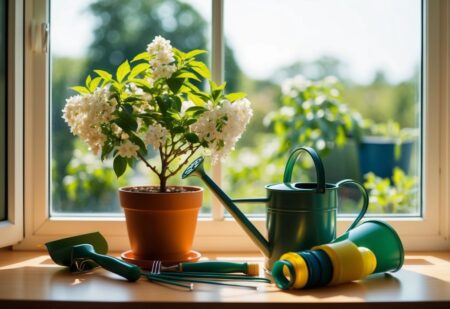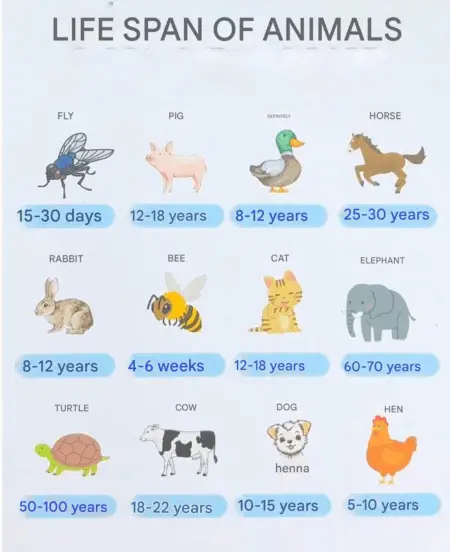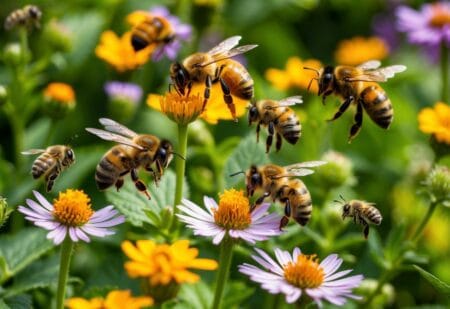Table of Contents
By providing a safe and accessible water source, gardeners can help bees and butterflies thrive, benefiting both the ecosystem and their gardens.
With just a few materials and a little creativity, anyone can set up a watering station that caters to the needs of these important pollinators.
Pollinators play a vital role in plant reproduction and food production. They require water not just for drinking but also for cooling their hives and feeding their young.
This blog post will explore various easy designs and tips for building a watering station that attracts these beneficial creatures, ensuring they have what they need to flourish.
Setting up a watering station can enhance the beauty of any space while serving a practical purpose.
This guide will provide step-by-step instructions and maintenance tips, making it easy to create a pollinator-friendly environment that supports local biodiversity.
Key Takeaways
- A watering station provides essential hydration for pollinators like bees and butterflies.
- Easy designs can be made using common materials found at home.
- Regular maintenance ensures the station remains a safe resource for pollinators.
Understanding Pollinators and Their Needs
Pollinators play a vital role in the ecosystem. They help plants reproduce by transferring pollen.
Providing a consistent water source is essential for their health. This section covers the importance of pollinators and how water supports their needs.
The Importance of Pollinators
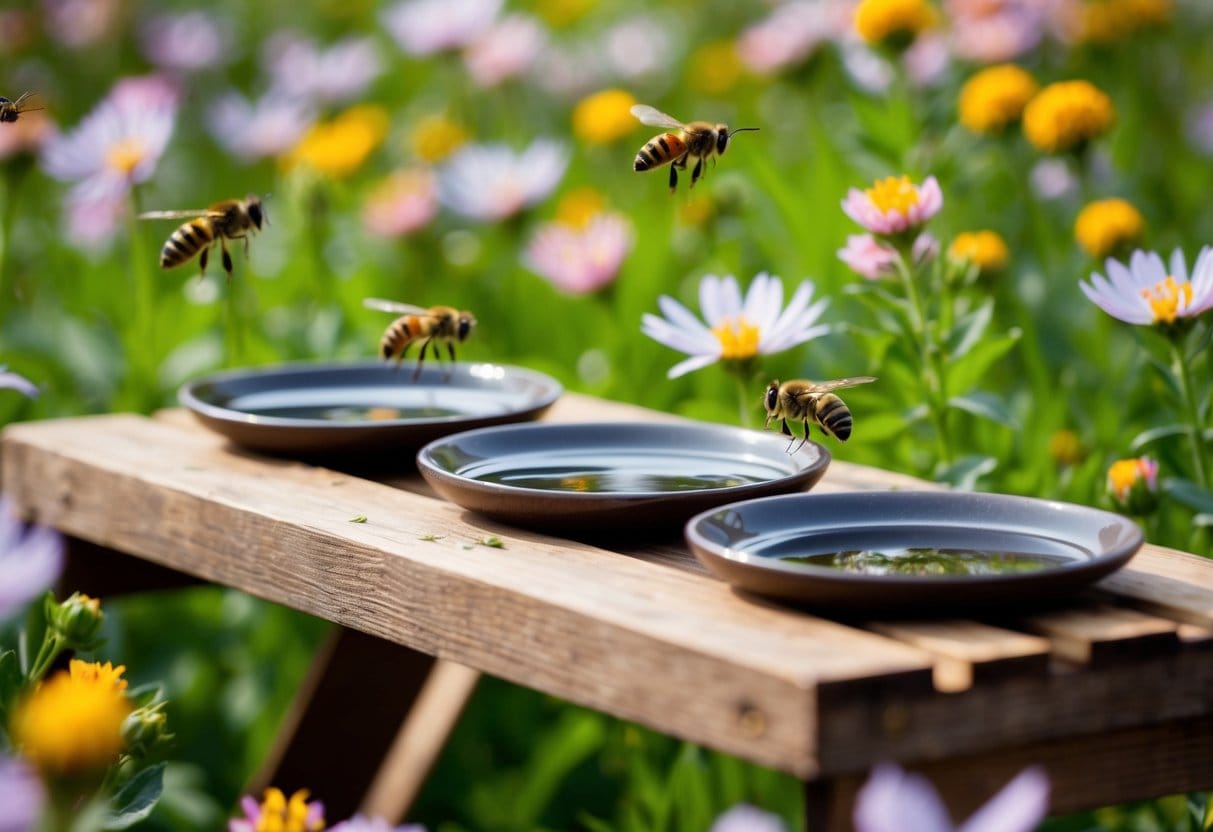
Pollinators, such as bees, butterflies, and hummingbirds, are crucial for food production. About one-third of the food consumed by humans depends on these creatures. They help fruits, vegetables, and nuts thrive.
Without pollinators, many plants would struggle to produce seeds and fruits. This decline would affect not only food supply but also biodiversity.
Many plants rely on specific pollinators, making each type important.
Creating habitats that support pollinators helps maintain their populations. Reducing pesticide use and providing native plants can attract them to gardens. Healthy pollinator populations support the entire ecosystem.
The Role of Water for Pollinators
Water is essential for pollinators to survive. They need it for hydration and to regulate their body temperature. A consistent water level helps prevent dehydration, especially in warm weather.
Pollinators often seek water from shallow sources, such as ponds or birdbaths.
A bee watering station can provide a safe drinking spot. It should have a shallow container filled with clean water.
Adding small stones or pebbles allows insects to land safely. This setup reduces the risk of drowning. Regularly changing the water helps keep it fresh and free of pests, ensuring a reliable source for pollinators.
Designing Your DIY Pollinator Watering Station
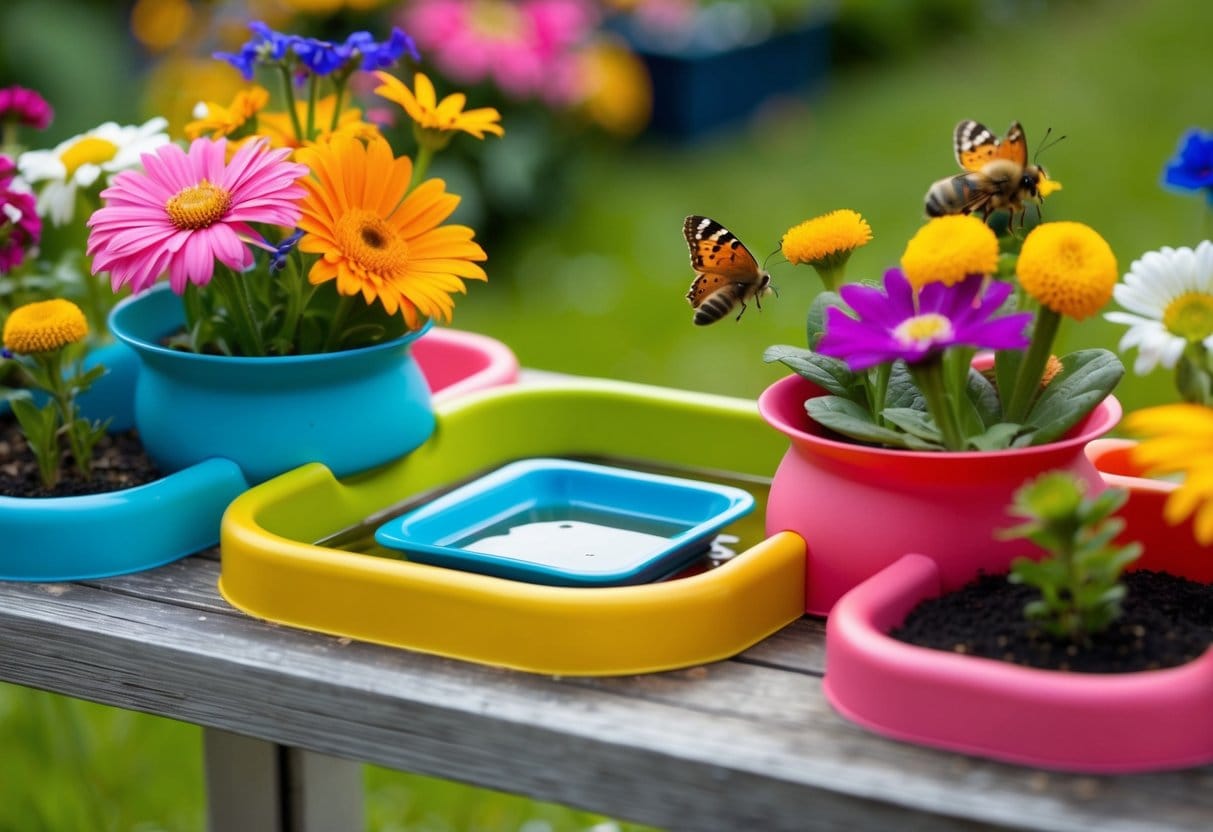
Creating a successful pollinator watering station requires thoughtful planning. The right location, materials, and construction steps will ensure it serves its purpose effectively. This section will break down these essential elements.
Choosing the Right Location
Selecting the perfect spot is crucial for a pollinator watering station.
It should be in an outdoor space that is easily accessible for bees and other pollinators.
Sunlight is important, so choose a location that gets several hours of direct sunlight daily. This warmth encourages bees to visit.
Avoid placing the station near strong winds or heavy foot traffic.
Pollinators prefer quiet spots to feel safe while drinking. Near flowers or plants they often visit can attract them even more.
A stable location reduces the chances of it being disturbed, ensuring a regular water source.
Materials and Tools Required
For a simple yet effective watering station, gather the following materials:
- Shallow dish or container: A plant pot saucer works well.
- Small smooth stones: These provide landing spots for bees.
- Water: Clean, fresh water is essential.
- Decorative elements (optional): Use terracotta pots or garden decorations for appeal.
Tools needed include scissors for cutting any materials and a durable container for anchoring the station. These materials ensure the bees stay hydrated and safe while visiting.
Step-by-Step Construction Guide
- Prepare the Base: Place the shallow dish or saucer in the chosen outdoor space. Ensure it is level and stable.
- Add Water: Pour enough water into the dish so that it is shallow. Avoid pouring too much, as it can cause drowning.
- Add Stones: Place small, smooth stones in the water. These will allow bees to land safely while drinking.
- Decorate (Optional): If desired, decorate the station with plants or stones around the dish. This adds charm and blends it into the garden.
- Check Regularly: Refill the water as needed, especially during hot days. Keeping it clean is vital.
By following these steps, it will create an inviting atmosphere for pollinators while enhancing the outdoor space.
Creating a Pollinator-Friendly Environment

To attract and support various pollinators, a well-planned environment is essential. Key components include native plants that provide nectar, creating butterfly gardens, and incorporating bee-friendly elements. Each aspect plays a vital role in fostering a thriving ecosystem.
Selecting Native Plants
Choosing native plants is crucial for creating a pollinator-friendly environment.
Native species are well-adapted to local climates and require less maintenance.
For instance, lavender is a great choice for bees. It blooms over a long period, offering abundant nectar. Other good options include:
- Coneflowers
- Black-eyed Susans
- Milkweed
These plants not only attract pollinators but also support local wildlife.
When selecting plants, it’s important to ensure a mix of blooms throughout the growing season. This ensures a consistent food supply for pollinators.
Integrating a Butterfly Garden
A butterfly garden enhances any pollinator-friendly setting. Butterflies are drawn to specific plants that provide nectar and host sites for their larvae.
To design an effective butterfly garden, include:
- Milkweed (for caterpillars)
- Joe-Pye Weed
- Zinnias
These plants help sustain various butterfly species.
Sun exposure is also important; butterflies prefer sunny spots for warming up.
Grouping plants in clusters can make it easier for butterflies to find food and mates. Adding flat stones can provide resting places for them.
Incorporating Bee-Friendly Elements
Incorporating bee-friendly elements is key to supporting bee populations. Bees need safe spaces to drink, rest, and nest.
Consider adding a bee watering station using shallow containers filled with pebbles. This allows bees to drink without drowning. Also, include features like:
- Bee hotels for nesting
- Wildflower patches for extra food sources
These additions enhance the garden’s appeal to bees.
When planting, opt for varieties that bloom in different colors and shapes. This diversity draws a wider range of bee species, contributing to a healthy ecosystem.
Ongoing Maintenance and Care
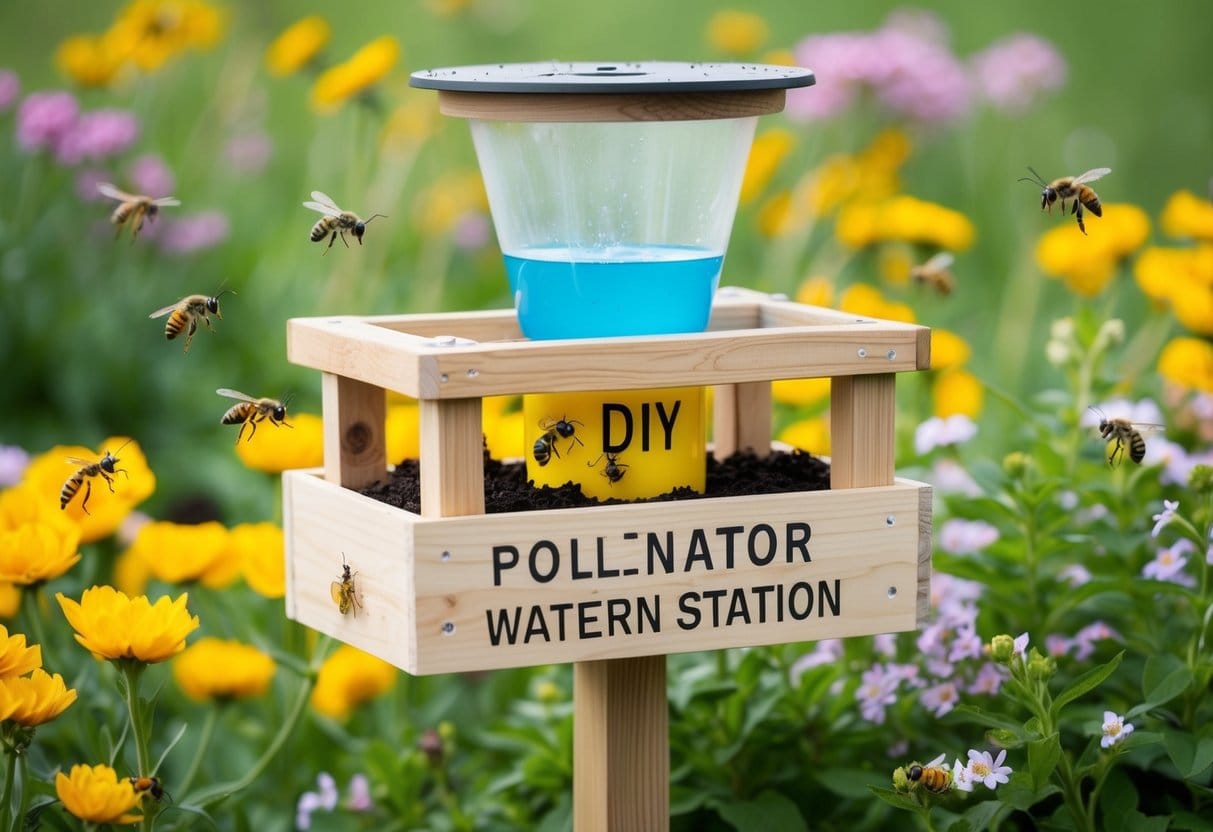
To keep a DIY pollinator watering station effective, regular maintenance is essential. This ensures that bees and other pollinators have a reliable source of water. The care involves monitoring water levels and maintaining cleanliness.
Ensuring a Consistent Water Level
Maintaining a consistent water level is crucial for attracting pollinators.
It is best to check the water station daily, especially during hot weather. If the water level drops, it should be refilled promptly.
Using a shallow container helps. Pollinators can easily access water without the risk of drowning.
If using a larger container, consider adding rocks or marbles. These provide landing spots, allowing bees to drink safely.
Keep an eye on water evaporation, which can vary based on the temperature and sunlight exposure.
Adjust the amount of water provided according to the season. Keeping track of the water level helps ensure pollinators always find what they need.
Regular Cleaning and Refilling
Cleaning the watering station regularly is vital for pollinator health.
Debris such as leaves or dirt can accumulate in the water, leading to contamination. This makes it unappealing for bees.
It is recommended to clean the container at least once a week.
Empty the station completely and wash it with warm, soapy water. After rinsing thoroughly, refill it with fresh water.
Check for any algae or mold growth. If noticed, cleaning may need to be more frequent.
By keeping the water station clean, it encourages pollinators to return often, supporting their vital role in the ecosystem.
Frequently Asked Questions
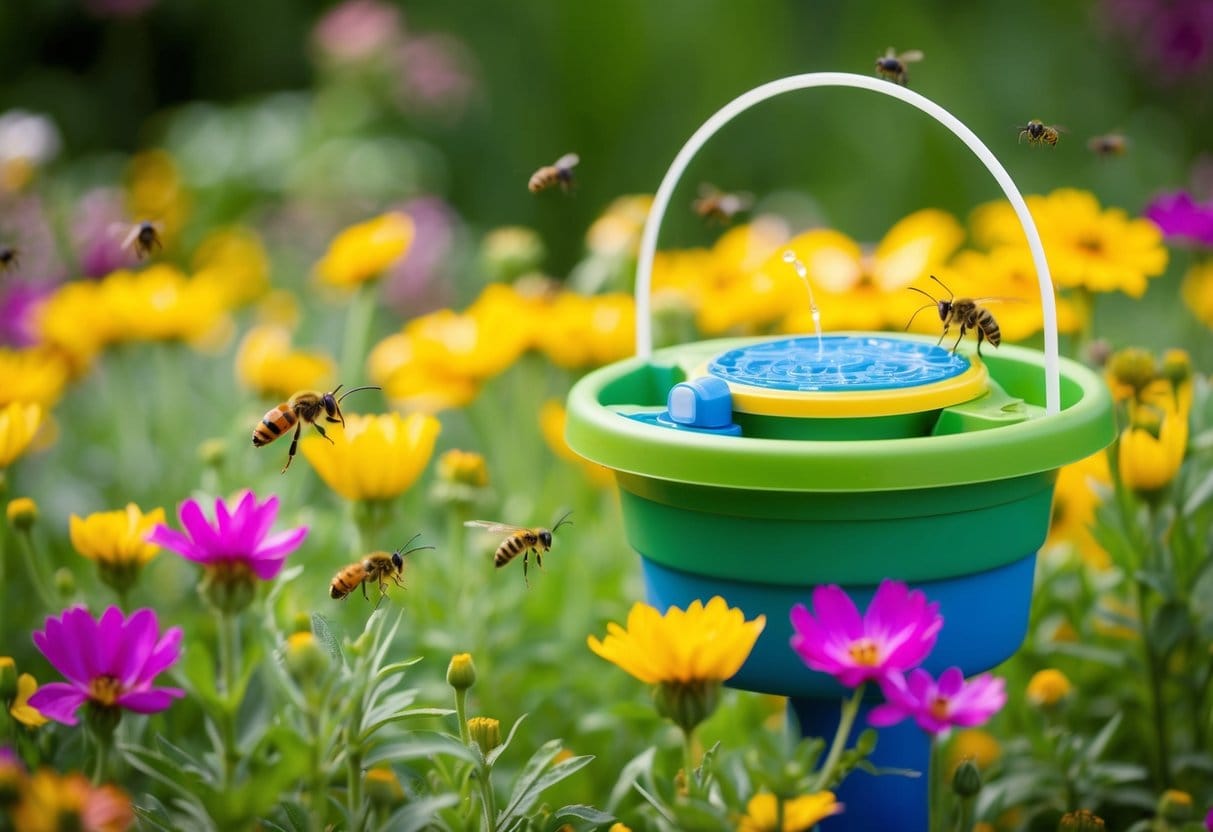
This section addresses common inquiries related to building and maintaining a bee watering station. The answers provide practical advice and specific tips to ensure a safe and effective environment for pollinators.
How can I construct a bee water station using materials from a dollar store?
Creating a bee water station from dollar store materials is simple.
One can use a shallow dish, like a plant saucer, as the base. Adding small rocks or marbles provides landing spots for bees, reducing the risk of drowning.
What are some creative ideas for building a bee water station?
There are many fun ways to build a bee water station.
Using colorful, decorative containers can enhance the garden’s look. Old birdbaths or terra cotta pots with saucers also work well, adding a rustic charm while serving their purpose.
What is the ideal location to set up a bee watering station?
Placing the bee watering station in a sunny spot is best.
This attracts bees and warms the water, encouraging them to visit.
It should also be away from strong winds and sheltered from heavy rain to provide a stable environment.
How can I provide water for bees without posing a drowning risk?
Using small stones or marbles in the water allows bees to land safely and drink without the risk of drowning.
It’s important to keep the water shallow, ensuring it doesn’t exceed a few inches in depth.
What are the steps to create a DIY watering station for pollinators?
To create a DIY watering station, start by selecting a shallow container. Fill it with clean, fresh water. Then, add small stones for safety.
Next, position it in a sunny area. Make sure to refresh the water regularly to keep it clean and appealing to bees.
Can a sugar water solution be used to attract and support bees and other pollinators?
Yes, a sugar water solution can attract bees. However, it’s not a long-term solution.
Honeybees usually thrive on nectar from flowers, which provides essential nutrients.
Regular access to clean water should be the primary focus instead.



